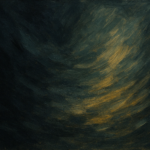Pain is a signal. It gets our attention. It arrests, alarms, and demands we listen. C.S. Lewis wrote in the problem of pain: “God whispers to us in our pleasures, speaks in our conscience, but shouts in our pain: it is His megaphone to rouse a deaf world.” And what a deaf world we have become.
Pain is physical—a sign of tissue damage. It’s defined as “physical suffering or discomfort caused by illness or injury.” But you don’t have to be injured to be in pain. The needle hasn’t touched your skin, and yet you tense up. The breakup hasn’t come, but your chest already aches. You brace yourself for a difficult conversation, and your shoulders tighten before a word is even spoken. These are not illusions. They are proof: the brain and body are not separate. Because pain is not always a sign of damage. It is a sign of danger—real, remembered, or imagined.
The International Association for the Study of Pain (IASP) defines it as: “An unpleasant sensory and emotional experience associated with, or resembling that associated with, actual or potential tissue damage.” They go on to emphasize several key points:
- Pain is always influenced by biological, psychological, and social factors.
- Individuals learn the concept of pain through life experience.
- A person’s report of pain should always be respected.
This definition acknowledges what many of us already know intuitively: Pain is never just physical. It’s also shaped by what happens in the mind, the heart, even the soul. It is felt—through nerves and thoughts, through stories we carry and silences we keep.
Pain exists at the intersection of all we are—flesh, thought, memory, meaning. It is biological and biographical. Sensory and symbolic. Material and mysterious. It is this and that. Body and brain. Purposeful and futile. Scientific and sacred. This is what makes pain so difficult to treat—and so easy to misunderstand.
When we reduce pain to a purely physical event—something that begins and ends in the tissues—we risk missing its deeper meaning. We flatten a deeply human experience into something mechanical. That dualistic thinking isn’t just deceptive. It’s dangerous. It can mislead both the one in pain and the one trying to help.
I’ve seen the damage that’s done when we ignore this. I’ve felt it too. I don’t just think pain is complex—I know it. I know it in my body, in my training, and in every story that’s ever been laid in my hands.
Pain is both a sensation and an emotion—it is always physical and emotional. Always. It’s shaped by everything that makes us human—our bodies, minds, thoughts, traumas, relationships, and beliefs. It’s not “just in your head” or “just in your back.” It’s both. And we need to make room to treat both.
Too often, I’ve seen people in pain dismissed—as lazy, dramatic, hysterical, or attention-seeking—when what they really need is to be believed. To be witnessed. To be met with care, not judgment. People are reaching out for a helping hand—only to be told, “you just need to try harder.” What they need is someone who won’t dismiss their pain or rush to fix it, but who can sit with them—attuned, present—until their system can reorient to safety.
That’s why I practice medicine the way I do—not to fix what’s broken, but to offer another way through. A way out of the pain cage. Because when we approach pain as a story to understand, we open the possibility for a different kind of healing. Not just the quieting of symptoms, but the transformation of meaning. A healing that doesn’t always come with noise and urgency, but arrives softly—like the hush after a storm. This is the path I try to walk with my patients. This is the kind of medicine I believe in—not heroic, but deeply human.
Pain is both a signal and a story. It tells us something is wrong, yes—but it also tells us something happened. And like a story, pain lives on in memory, in sensation, in the silent spaces of the body and soul. Even when the story has ended, the pain can remain—just as a melody lingers in the quiet after a song.
It’s not just what happened, but what echoes. What stays. What asks to be witnessed. Because we are not just bodies and brains—we are stories, systems, and souls. And pain—like story—is meant to be witnessed.
Katie Hatt is an osteopathic physiatrist.














![Rebuilding the backbone of health care [PODCAST]](https://kevinmd.com/wp-content/uploads/Design-3-190x100.jpg)




![Why physicians must lead the vetting of medical AI [PODCAST]](https://kevinmd.com/wp-content/uploads/The-Podcast-by-KevinMD-WideScreen-3000-px-3-190x100.jpg)
